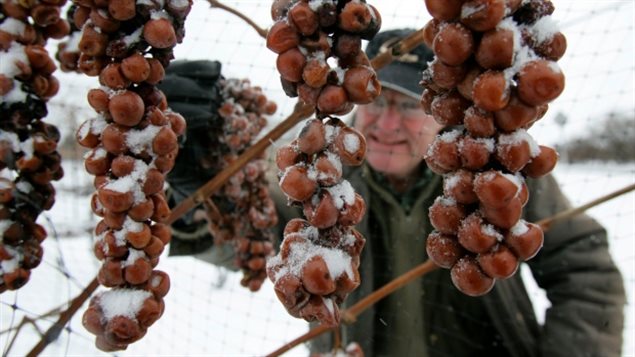The Niagara region is the most prolific wine-producing region in Ontario, and one of the two major regions in Canada, the other being the Okanagan Valley area of British Columbia.
But following a bumper harvest 2013, Niagara grape growers were hoping the bitter winter of 2014 in Ontario was an anomaly. Unfortunately, again this winter unusual Arctic cold has descended far south and stayed for an unusually long time in central and eastern Canada, resulting in periods of several days at a time with below -20C temperatures. That cold for that long can kill even the hardiest varieties of grapevines.
In his blog “Wines in Niagara”, Rick VanSickle wrote, “The latest results are particularly tough to swallow coming in the wake of 2014 that was the worst winter since 2005 and caused wide-spread damage to the most vulnerable grapes in Ontario, especially Syrah, Merlot, Sauvignon Blanc and Semillon”
Jim Willwerth is a scientist at Brock University’s Cool Climate Oenology and Viticulture Institute. He spends part of his time observing how many buds survive on vines after particularly harsh winters. The buds are the tiny nodes that will ultimately produce grapes.
Samples are taken from several areas of a vineyard, and examined in the lab.
Results so far are as bleak as the winter cold has been, with a high percentage of buds frozen to death. Survival rates are below 20 percent in many areas.
Quoted in the Toronto Star newspaper he said, ““It’s definitely not good in some locations. How bad it’s going to be is still yet to be determined.”
Last year, strategic pruning, leaving more buds on the vine, may help some vineyards reduce the overall damage, while other growers used wind machines to circulate warmer air at the bottoms of the trunks.
Pruning is based on the farmer’s estimate of how many grapes the vine should produce; too much and quality of the grapes may go down ,and the vine may be stressed and weaken it and lower production for the next season. If they find the cold has
While this may have helped in last year’s deep freeze, some of those same vines may have survived but been left weakened, and may not have done well in comingthrough this harsh winter.
Another method is to plough dirt up against the vine trunks above any grafts to help insulate the vine.
The somewhat better news is that vineyards closer to the lake and in some microclimates along the peninsula seem not to have suffered quite so badly with a 70 to 85 percent survival rate.
Still growers remain optimistic, noting that there is still plenty of wine in the system from a few previous good years. Many have said it’s too early to say whether the loss will be catastrophic.
Debbie Zimmerman, CEO of Grape Growers of Ontario, is quoted in the Toronto Star saying. “It won’t be until July when we’ll have a sense of whether we’ll have a crop.”
There are now almost 90 wineries across the region with 5,500 hectares of vines.







For reasons beyond our control, and for an undetermined period of time, our comment section is now closed. However, our social networks remain open to your contributions.